Text
The 1991, No. 19 issue of the magazine, NYCTALOPS. This would be the very last issue of this very important publication. NYCTALOPS was a product of the SILVER SCARAB PRESS which was edited and published by Harry O. Morris Jr. From its humble beginnings in the early 1970s, NYCTALOPS would become a leading platform for art, origional fiction, and scholarly evaluations of Lovecraft and other acknowledged masters of horror fiction. The front cover in full color was the work of German artist, Helmut Wenske. The ink rendering of Rhan-Tegoth from Lovecraft's ghost written story, THE HORROR IN THE MUSEUM, was the work of David Pudelwitts. The photo collage of a man recoiling in horror from a multi-eyed tangled monster was the work of. H. E. Fassl. The origional tale, THE STRANGE FATE OF ALONZO TYPER, a story based on the origional Lovecraft 'revision', THE STATEMENT OF ALONZO TYPER, and was the creation of noted Lovecraft Scholar, Robert M. Price. (Exhibit 487)
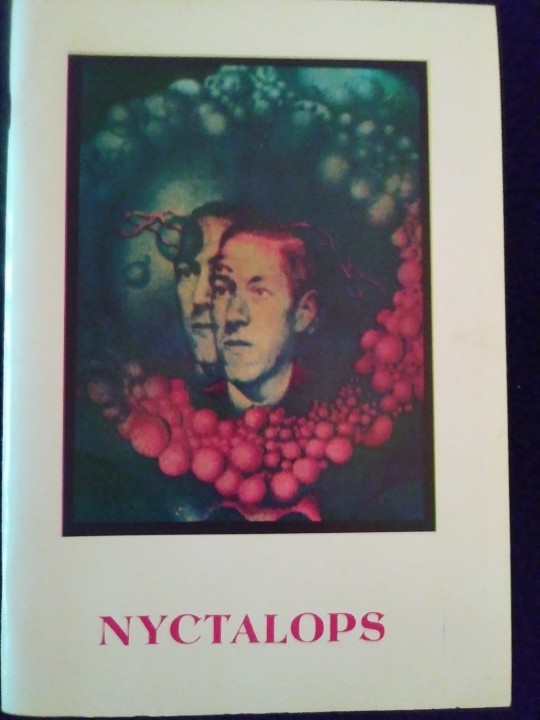
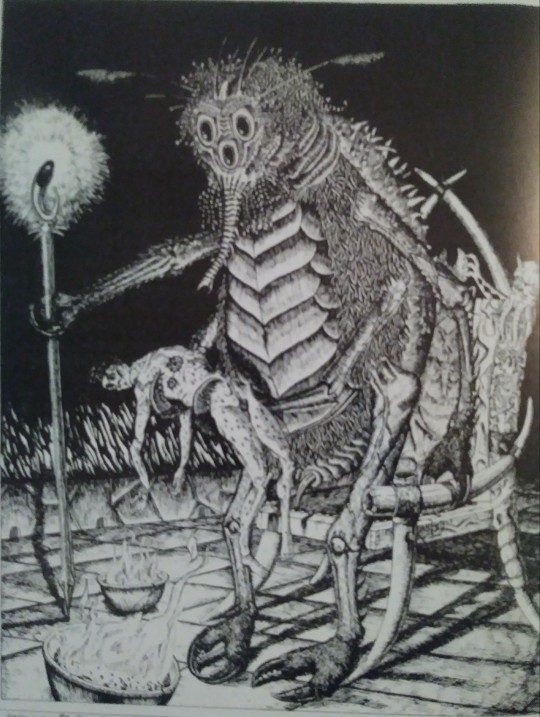

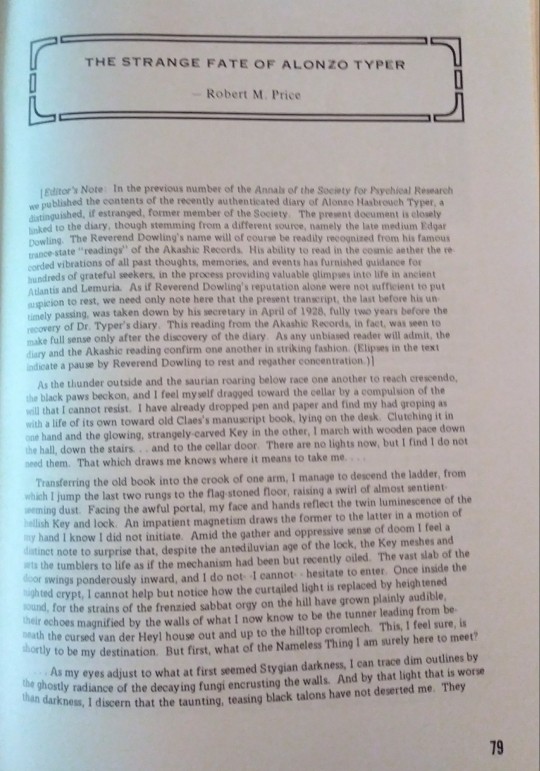
2 notes
·
View notes
Text
Many or perhaps most of Lovecraft's alien species, the Star-heads of Ancient Antarctica, the Mi-go, fungi/crabs of THE WHISPERER IN DARKNESS, Great Cthulhu his cosmic octopi minions in THE CALL OF CTHULHU, The Great Race creatures of Yith, in THE SHADOW OUT OF TIME, the insect-humanoids from the planet, Yaddith, One of which has possessed the soul and personality of Randolph Carter in, THROUGH THE GATES OF THE SILVER KEY, all seem to have ventured to Earth from locations far distant in space and time originally. In the ghost-written tale, THE MOUND it is recorded that in some distant period Great Cthulhu brought a race of humanoids to earth before our own native population of evolved here in like fashion. Dagon and his fish/frog humanoids might be one of the only alien creatures of higher intelligence and culture to have evolved naturally here on earth. Our biological similarity to these creatures even allows humans to interbreed with the "Deep Ones". Below are ink drawings of Dagon and one of his followers dressed as a priest. Both are the work of Richard Gilman Huber. The top left illo was the work of artist Hannes Bok. The painting of THE CREATURE FROM THE BLACK LAGOON was featured in a store called UNUSUAL in Old Ellicott City, MD and appears to be signed 'Wolf'. The somewhat comical looking sea monster was from a very old publication of the 1800s. The bronze statuette of a man/frog holding a crystal globe was not signed. (Exhibit 486)


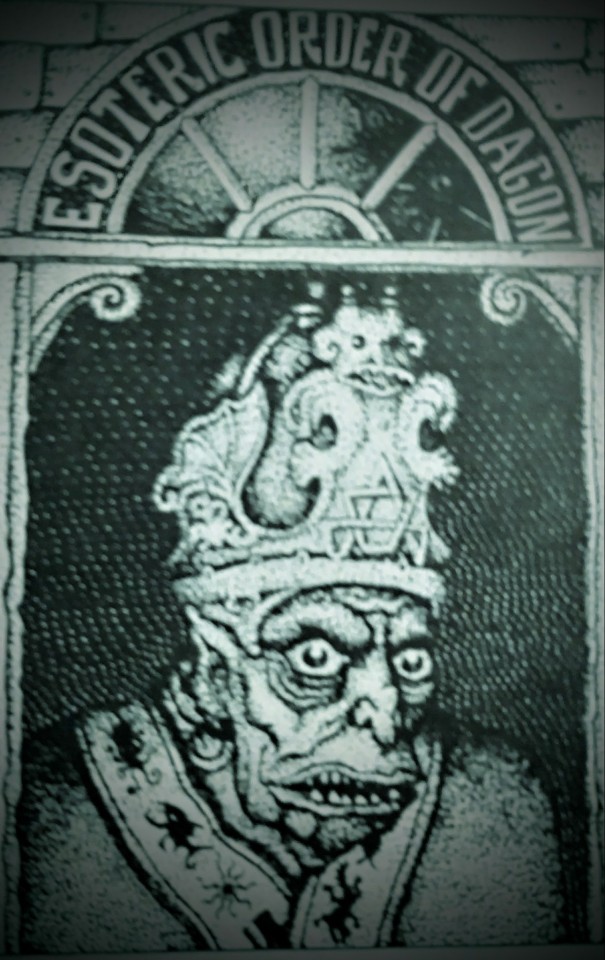
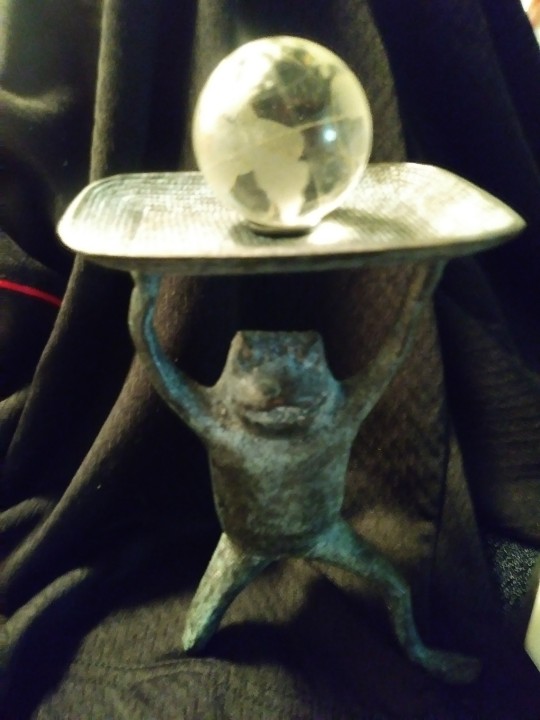


4 notes
·
View notes
Text
Front and rear covers of SKULL#5. This edition along with #4 in the series was dedicated to the fiction of H. P. Lovecraft. The interior illustrations were all B+W but were of high quality. Condensed versions of Lovecraft's, THE RATS IN THE WALLS, the poem, TO A DREAMER, and THE SHADOW OUT OF TIME, were featured. The latter tale was renamed THE SHADOW FROM THE ABYSS, however. Artists and contributors included, Gore, Spain, Todd, Sheridan, Jaxon, Deitch and Dallas. The comics were produced in a format typical of the underground types of the early 70s and were listed as "Adults Only". Last Gasp, ECO-FUNNIES, were produced at Box 212, Berkeley, CA. 94701. Naturally long out of print, there have been rumored second printings. Though Lovecraft himself might not have cared for the sexualized covers, the interior stories ring fairly true to his origionals. (Exhibit 485)

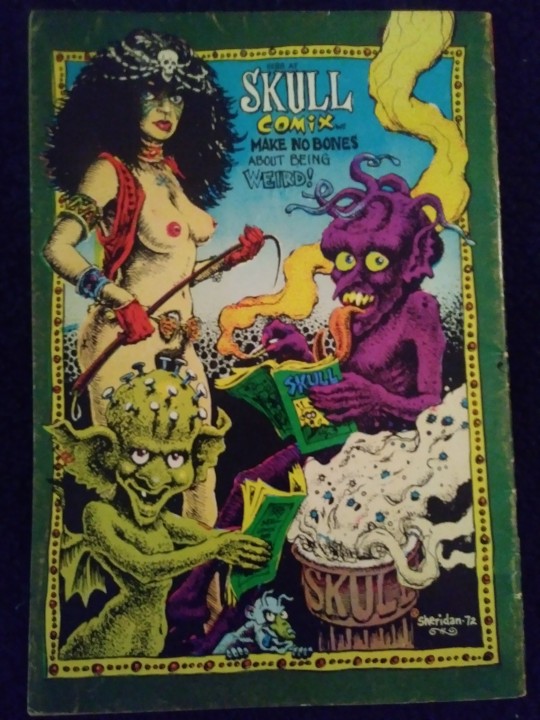
1 note
·
View note
Text
The Eye of Providence, is a symbol with particular significance for the Free Masons. It appears on the reverse of all dollar bills in the U.S. as well. The somewhat 'secretive' and mysterious Free Mason organization included many of the founders of the United States of America and even many American Presidents have been members. H. P. Lovecraft mentioned that the "Old Masonic Hall" in his tale, THE SHADOW OVER INNSMOUTH, had been usurped and converted to a temple or meeting center for the monstrous members of THE ESOTERIC OF DAGON. In that tale - one of Lovecraft's finest - HPL connects Dagon and his minions to the later and origional entity, Great Cthulhu. Dagon was an actual diety worshipped in ancient history whilst Cthulhu was purely Lovecraft's own invention. Lovecraft's Dagon was somewhat altered in nature from the historical figure, however. Though HPL himself was probably never a Mason personally he likely saw some interesting fiction writing inspiration in the organization. The Free Masons would eventually be associated with the Knights Templars and also with the fabled 'Illuminati'. Lovecraft found story writing themes in nearly all established, myths, religions, fringe organizations, folklore, and conspiracy theories of his time. Though he advised future writers of horror or supernatural fiction to avoid using the old stale themes of warewolves, witches, ghosts, demon possession, and haunted houses, in their tales, he himself fiddled with all of these, each time suggesting that their were far greater horrors BEHIND THEM ALL! The illustrations below on the lower left and right were created by your curator many years ago in pen and ink. (Exhibit 484)
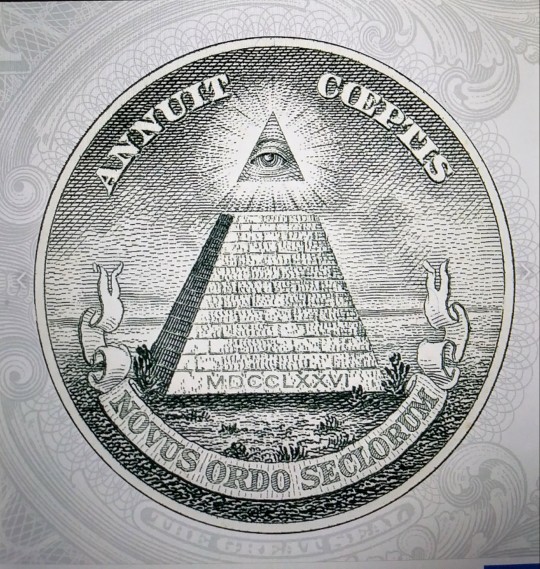

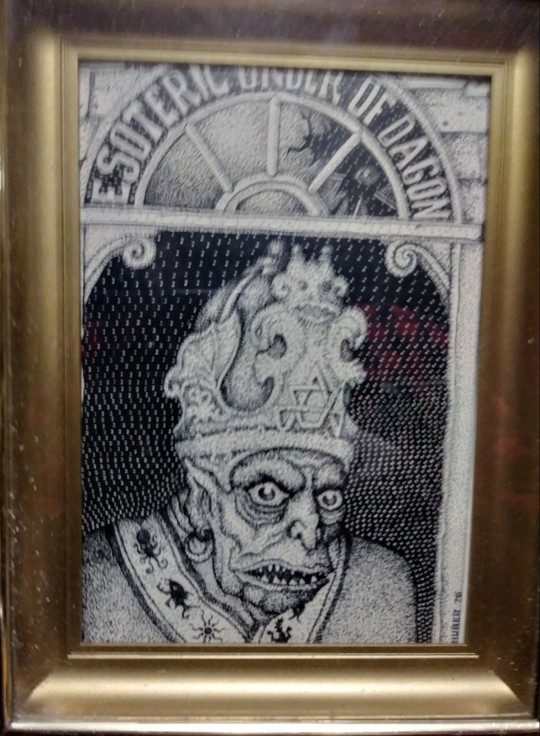
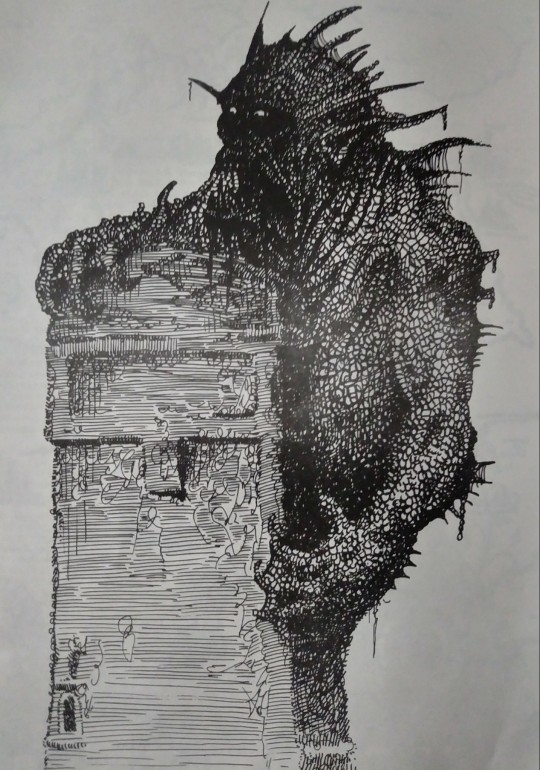
#lovecraft#Dagon and Cthulhu#HPL improvising on traditional supernatural themes#The Masons#The illumiati
1 note
·
View note
Text
H.P. Lovecraft meets PEANUTS. "Call of Snoopthulhu" by Anna-Maria Jung. Lovecraft's legacy has naturally become a subject for lampooning and comical adaptation. (Exhibit 483)

6 notes
·
View notes
Text
If you have been following the many explorations I have made here at THE H. P. LOVECRAFT MUSEUM of Lovecraft's fictional creations you may have gathered that the primary conclusion of my many years of study is that H. P. Lovecraft created a "synthetic religion" within the core of his tales. That mythic and 'mocking' religion developed at first almost subconsciously, but as the tales became longer and more complex HPL began barrowing demons, grimoires, haunted lands, and nefarious characters from previous stories. He incorporated these things into later stories adding a ring of hidden and lingering discomfort to a growing whole. Certainly Lovecraft did not feel any affection for religion in general. Essentially he believed that clinging to established religions in the face of modern scientific method and rational thought was a loser's game and only for fools. Still, there is unquestionably evidence in the background of his tales that HPL had created a complex and terrifying "religion". This religion, considering Lovecraft's numerous and undeniable statements in letters to friends that he had absolutely ZERO belief in anything supernatural would certainly affirm my contention that he created his fictional mythic religion to mock all those of actual history. As to Lovecraft's cosmic powers (Gods) we should look at them more from the cosmic hierarchy of Ancient Greece with a certain borrowing of the more complex aspects of Eastern dogma. Certainly Lovecraft's fictional cosmos is not ruled by only ONE god. As with Hinduism, Buddhist beliefs, or the many characters present in Classical Mythology, the Lovecraft cosmos is ruled by a plethora of beings generally working in concert towards some great ultra-cosmic and supernatural destiny. As HPL's mythology developed it would certainly appear that he meant for his most powerful cosmic characters to represent 'Archetypes'. Azathoth/ Chaos, becomes a sort of mindless 'Vast Lord of all Things, Shub-Niggurath becomes the "ALL Mother". Shub-Niggurath's mate is eventually identified as the ultimate 'father of the mind' in the E. Hoffmann Price, HPL collaboration, THROUGH THE GATES OF THE SILVER KEY. That ultimate Godhead of the mind and the great cosmic brain in which all creative thinkers are 'cells' would be Yog-Sothoth - probably the personal favorite of all Lovecraft's mythic personalities. Great Cthulhu would be demoted to a 'priest' and a fairly ineffectual one at that! Nyarlathotep, the soul and messenger of Chaos/ Azathoth, would become a force very much akin to Satan in HPL's fiction. Now I should admit that many noted Lovecraft critics do not share my views. For them Lovecraft's cosmic backstory was only window dressing, meandering and without any real systematic interconnection. Most of these persons will agree that August Derleth made a huge blunder in trying to find some "reasoning" behind Lovecraft's concepts. I agree that they are right in that! Derleth was on the right track, he just underestimated the overall scheme. (Exhibit 482)

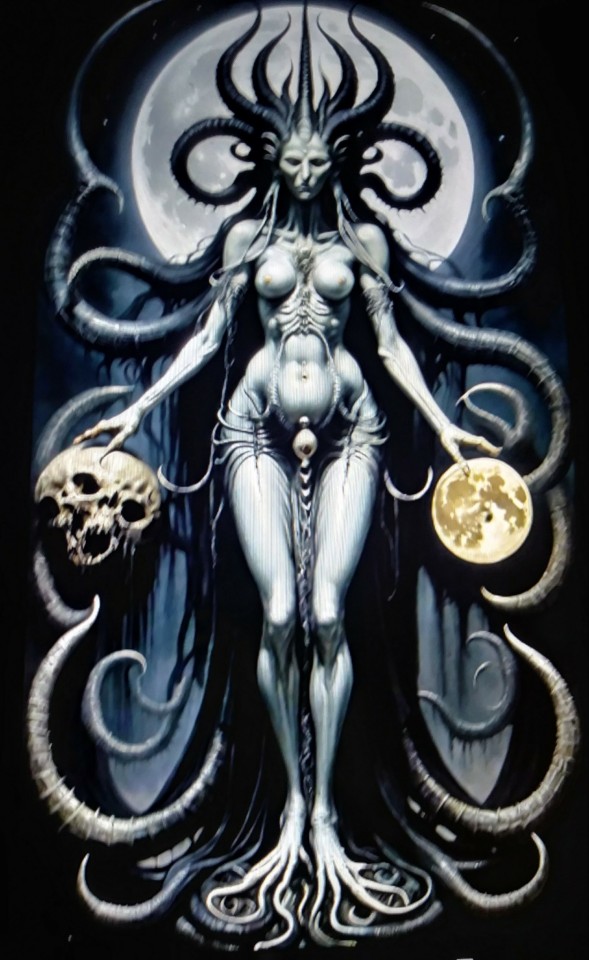






0 notes
Text
Young man Lovecraft standing in an inch or so of snow. HPL had attempted to enlist in the military during WW1. His mother discovered this and was able to convince the recruitment authorities that her son could never survive life as any kind of soldier. He was released from his brash enlistment attempt as a result. Lovecraft would likely have been given a desk job with the military eventually, one in which his writing skills might have been suitable. However, Lovecraft's unusually complex communication style and the fact that he insisted in spelling words using British English, might have proved a problem. There are more than a few stories Lovecraft told over the years of his problems with authority. No branch of the military would have stood still for potential insubordination. Additionally, Lovecraft really never learned to type properly either. He admitted to using the laborious 'Hunt and peck' method while using a typewriter and often stated that he hated the noisy machines. Even though HPL might have found some useful position in the war effort sitting behind a desk, he still would have had to have taken basic training. If HPL had been forced to stand outside in temperatures below 40 degrees wearing fatigues he might very well have fallen into a coma. Lovecraft's extreme sensitivity to cold was a not feigned. Mom knew best! P. S. The photo below shows Lovecraft around the time he had put on considerable weight. He reached 200 lbs after his marriage to Sonia Greene and though he is obviously standing in snow it must have been on remarkably warm day when the white stuff was melting quickly. The photo also seems to support L. Sprague deCamp's claim that Lovecraft had rather small feet for his stature. Though Lovecraft made some absurd claims in letters that he was a heart some sort of hairy armed, Viking warrior, the truth beyond his occasional bluffs and bluster was just plain comical. One really never knows for sure if HPL was making such wild proclamations with tongue in cheek? His dry, New England, Yankee humor always has to be considered. (Exhibit 481)

5 notes
·
View notes
Text
Lady Liberty, the towering statue which stands as a welcoming beacon at the edge of New York City, holds aloft a light of hope for emigrants coming to America to escape their troubles in the rest of the world. She might eventually have symbolized something very different for H. P. Lovecraft. When Howard Phillips Lovecraft married Sonia Greene, he was leaving behind his coddled life as a virtual child in Providence RI. His beloved, but certainly overly protective mother had recently died. He informed none of his friends that he and Sonia were planning to wed. None of them were invited to the ceremony. The Lovecraft's moved to NYC to find financial success and a new life together. For Sonia and Howard Lovecraft New York City offered only failed dreams and depression. Lady Liberty, The Woman In Green in New York Harbour would have stood as a symbol of anything but hope for Mr and Mrs Lovecraft. Like Lady Liberty, Sonia Greene, the woman HPL would eventually marry, was also "Statuesque". In fact more than one person who met her described Sonia Lovecraft with that term. Like Lady Liberty she was also green - or more properly 'Greene'. Howard never succeeded in finding steady employment while in NYC, his wife lost much of her savings and the hatshop she opened in the city failed after only a few months. Sonia would soon suffer a mental breakdown as a result of the pair's troubles and retreat to a rest home in New Jersey. For H. P. Lovecraft the city that may have symbolized his entry into manhood or even 'adulthood' as a husband and the promise of a future as a successful writer of note proved to be a trap and virtual prison. After 2 years of suffering in The Big Apple - native New Yorkers apparently don't care for the term - HPL was invited back to Providence RI by his aunts. His retreat from an obviously failed marriage and his total failure as a "provider" in the traditional husband role of the times, was a turning point in his life. Gone was much of the youthful arrogance we see in letters from his younger days. H. P. Lovecraft slinked back to the city of his birth never to leave it again except for occasional trips to visit friends and to visit cities and towns he read about as potentially interesting to an 'Antiquarian" like himself. Pictured below is a statue of Roger Williams, famed as the founder of Providence, RI. It stands in Prospect Terrace Park. Stiff and uninspiring as it might appear to others, the statue of Roger Williams, founder of Providence, RI would represent a welcome home for Lovecraft. The statue of Williams stands not far from the location of Lovecraft's various residential homes in the College Hill district of Providence and looks out upon the newer glass and steel structures of the city which Lovecraft disliked. For HPL, the antiquarian, a man who fancied himself a loyal subject of The King's colony of Providence Plantations, the Statue of Roger Williams might represent a guardian of the old ways. He gazes out upon the newer parts of the city, rising up from the vale to the West, with a raised hand and might almost be saying to the modern world, "Stayaway!" (Exhibit 480)

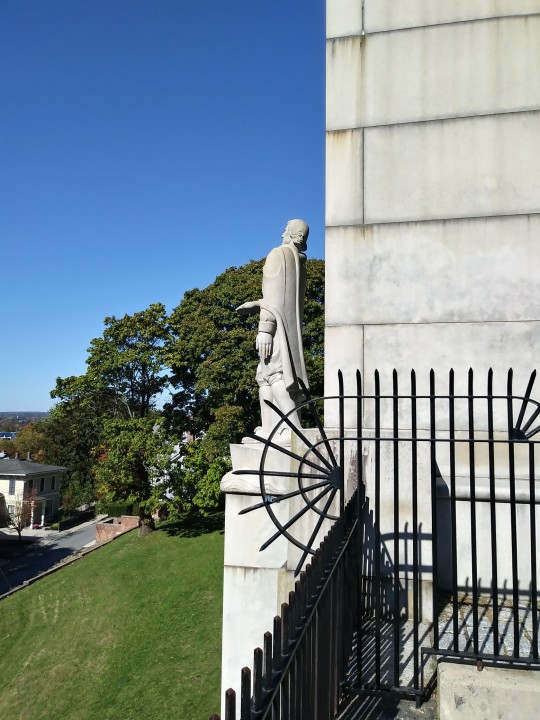
2 notes
·
View notes
Text
When I suggested that Lovecraft might have written, The Call of Cthulhu, as a sort of celebration of his escape from New York City and return to his beloved home of Providence, RI, I received some pushback from others who have studied HPL. However, let me visit the idea a little more closely: HPL arrives back in Providence from NYC in the month of April. Great Cthulhu and his mighty, green, oozing, stone city of R'leyh - only recently risen from the bottom of the Pacific Ocean - sinks once again taking and trapping Cthulhu with it also by April 1st. This event which almost certainly saved the world from a cataclysmic fate occurred during a sudden and fortuitous storm at sea. Now granted, Lovecraft's unhappy marriage and life in NYC began when he and his new wife - they were married in a church in New York - chose to live in NYC as their new home. Lovecraft was at first enthralled with the towering skyscrapers and their imposing beauty at sunset. The infatuation did not last long. Up close New York was dirty, filled with slums, noisy, smelly, and moving at a pace that an old school New Englander like HPL just could not abide. Thanks to Sonia Greene Lovecraft's cooking, HPL put on weight - from the evidence of the photos they took of each other - so did she. HPL had spent most of his life as a fairly slender individual. He made it plain in letters to others that he despised the fact that although he was 5'11", 200 Lbs did not look good on his particular frame. Nonetheless his wife preferred him with his extra weight. Certainly, the added flesh reduced the appearance of HPL's more unusual and frankly bizzare facial features. Well, unlike Cthulhu who was dragged to the bottom of the sea after only a brief appearance at the surface, Lovecraft endured an ever devolving existence in New York for 2 full years before he was able to return to the shelter of his New England homeland. As he testified in letters, once his wife lost her job in New York and then failed in opening her own hatshop, the couple in essence parted ways. Sonia Lovecraft took a job in Cincinnati 600 miles away! Well, our one time bloated Lovecraft -Cthulhu was also described as "Bloated", quickly slimmed down to around 145 lbs once he was free from his wife's cooking! Now true, Sonia was rarely in the picture after the Cincinnati move, but her husband - who couldn't bear to move to the Midwest with her? - remained behind in a tiny apartment crawling with rats! What! One thinks of Lovecraft's very Poesque tale, THE RATS IN THE WALLS at that point? Well, Lovecraft escaped his fat self, his marriage to a very un-traditional, non-Yankee wife, his utter failure as a provider in the traditional role of a husband, and a crumbling ruin of an alien- infested city, just in time! (Exhibit 479)



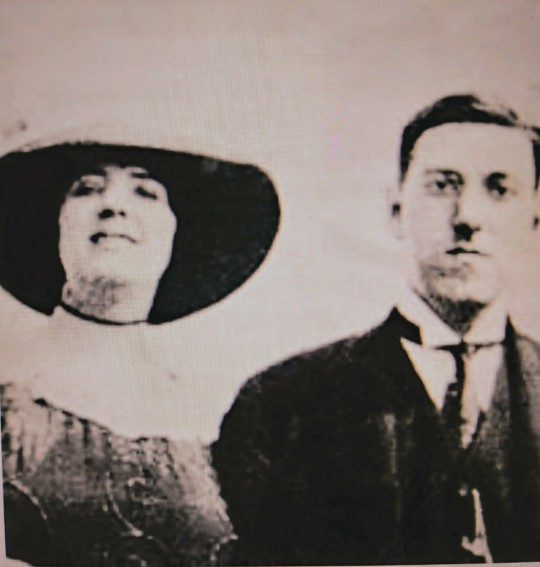
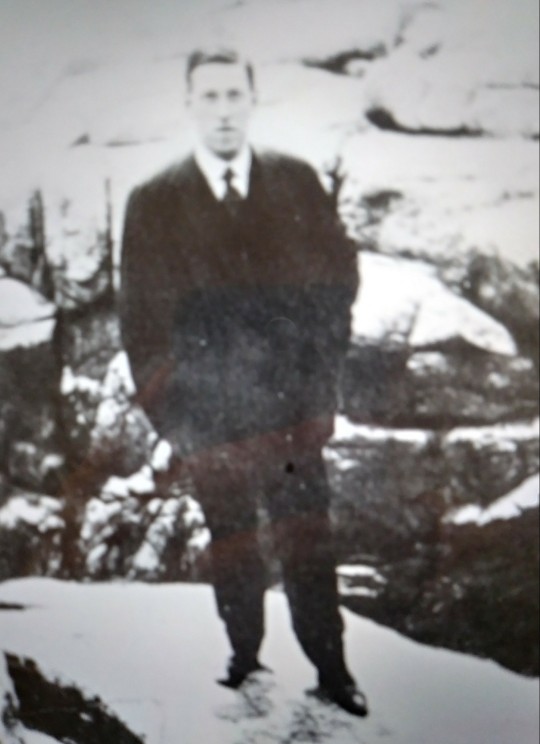
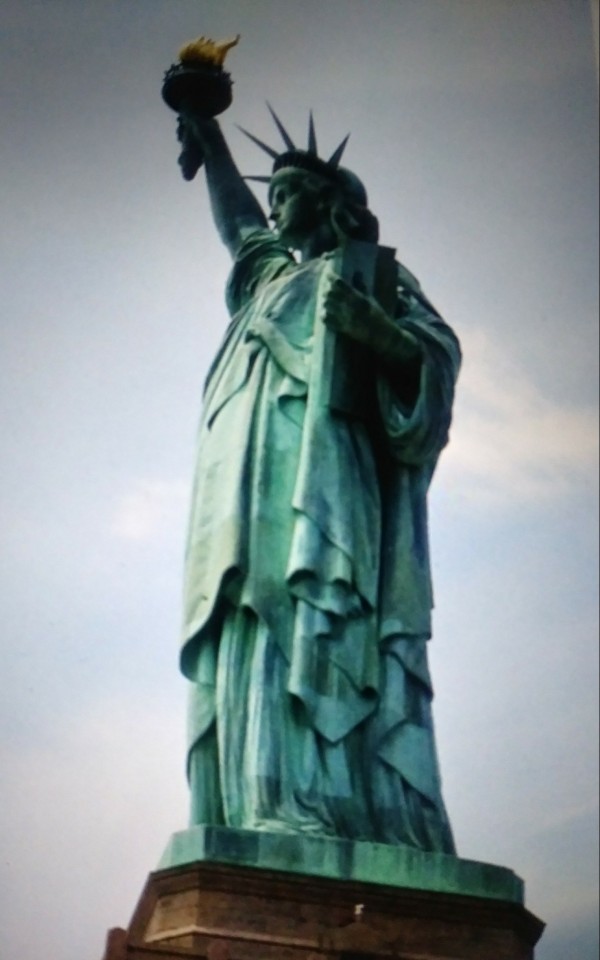
2 notes
·
View notes
Text
It has been said by several critics that H. P. Lovecraft could not write dialogue. Certainly the type of dialogue that we see commonly in various and sundry novels by popular writers is missing or considerably truncated in Lovecraft's stories. There is, however, a very good reason for that. The majority of HPL's tales are narratives told by a single person. Entering the mind of that narrator is almost always key to the whole telling of the tale. We are told not so much what our hero - or perhaps more rightly 'victim' - says but rather how he 'feels' as the tale progresses. We 'become' the narrator, seeing what he sees from his lone perspective (Lovecraft's narrators are never female, but they are very rarely common salt of the earth males either). Our new 'self' is exposed to wondrous and eventually horrible conditions and "TRUTHS" the likes of which we ourselves have never previously experienced. Because of this alienation from 'normal' reality our loneliness and dislocation from others of our species deepens. Conversation between two or more individuals cannot describe in depth the emotion and evaluations of our respective fictional hero in full. Certainly there are brief examples of dialogue in Lovecraft's stories but even these usually amount more to "speeches" than conversations. The story told by the town drunk, Zadok Allen in THE SHADOW OVER INSMOUTH is a perfect example. I liken that speech almost to the famed narrative of Capt. Quint below decks in the movie JAWS. Again, Lovecraft's stories were mostly short. Dialogue in short tales of horror generally becomes confusing and brakes the tension and flow of 'atmosphere'. For Lovecraft, atmosphere was the absolute key element in any tale or horror. Dialogue has its place in novels perhaps, but HPL wrote only one real novel in his life and that did not see publication until years after his death. Again, when we enter the mind of one of Lovecraft's characters we almost always find ourselves sharing the thoughts, feelings, and perspective, of a person oftentimes more intelligent, sensitive, erudite, and perhaps for a little while closer to losing their sanity than we will ever be. IF WE ARE LUCKY! (Exhibit 478)



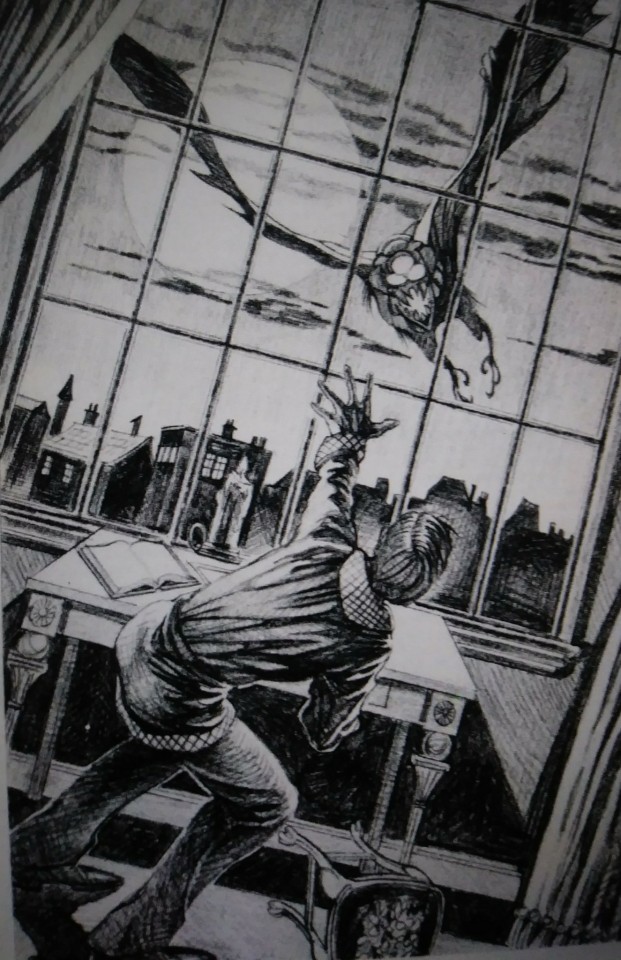



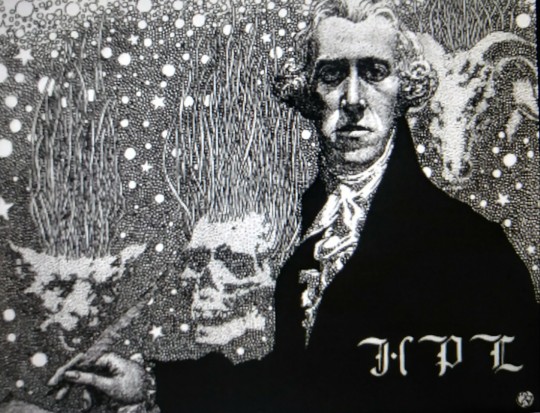
4 notes
·
View notes
Text
An interesting collection published in 2017 by Pushkin Press, 71-75 Shelton Street, London WC2H 9JQ. THE KING IN YELLOW was a volume first printed in 1895 and authored by Robert W. Chambers. No individual tale was called, THE KING IN YELLOW. The stories were complex, vauge and open to interpretation. Certainly Chambers himself was influenced in this work by 2 minor and nebulous tales previously written by Ambrose Bierce. The handsome cover of this particular book is a somewhat stylized and abstract take on the poster Chambers himself created to advertise his own book. The design and cover illustration was by Leo Nicholls. Chambers (1865-1933) attended art school in Paris and himself was a respected painter with more than a few salon exhibits. Chambers, who was American by birth and desended from a well to do New York family, turned to writing rather than art. Though he is best known today as a writer of horror fiction, he would eventually turn to romance-type fiction and became one of the most successful authors of the early twentieth century. Despite the general belief that Chambers' King in Yellow tales held a direct link to HPL's work, that is demonstrably untrue. Nonetheless Lovecraft respected Chambers' horror tales and mentions some of his characters and place names in passing in his own works. The idea that The King in Yellow was in fact Hastur and a standard character in the so-called, Cthulhu Mythos, is all August Derleth and ZERO Lovecraft. (Exhibit 477)

6 notes
·
View notes
Text
Was Lovecraft's fictional character, Abdul Alhazred, meant by HPL to be an evil or malignant indidual or was he a prophet of the horrible future humankind is destined to face? The brief quotes that Lovecraft includes in his tales that he attributed to Alhazred and the bits of information he gives us about the "Mad Arab" himself would suggest that he is not himself 'evil', but only the messenger of a very disquieting reality - that being that the cosmos is not ruled by benevolent forces, that humanity has no glorious future, and the world is a swirling, mindless, and ultimately irrelevant incident in cosmic infinity itself without plan or meaning. Is Abdul Alhazred mocking us, warning us, or both? (Exhibit 476)
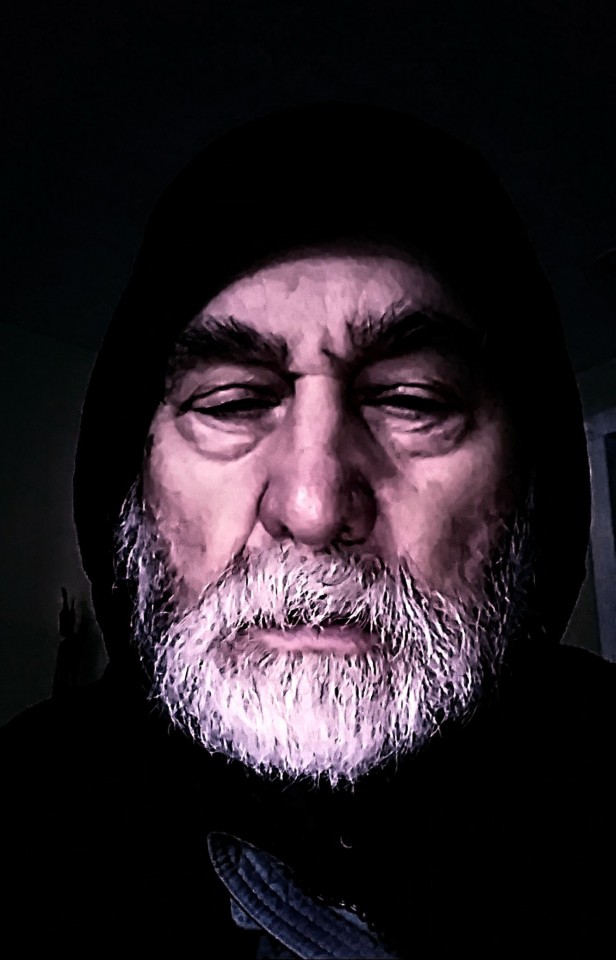
3 notes
·
View notes
Text
A tee shirt on display at Spencers at the Columbia Mall. The image appears to represent Death in typical symbolic fashion, but beneath his shroud tentacles are emerging. These might also be interpreted as the gnarled roots of a tree. Regardless, the image seems to be a nod to H. P. Lovecraft and the plethora of instances in which tentacled monsters are cited in his fiction. The image here also brings up the question of whether Lovecraft meant for his Satan-like entity, Nyarlathotep, to be a stand-in for Death - death on a cosmic and perhaps Archetypical level? Certainly Nyarlathotep's title of "The Crawling Chaos" would suggest that he/it is a presence in the universe bent on destruction and spreading misfortune, that Nyarlathotep is in fact the 'personification' of the negative and eroding force of ALL natural reality. (Exhibit 475)

5 notes
·
View notes
Text
Front and rear covers of THE MASK OF CTHULHU. This hardback collection contains 6 tales written by August Derleth somewhat in the style of H. P. Lovecraft. The MASK OF CTHULHU was a title of the collection and no individual tale by that name is included. The Neville Spearman (Jersey) LTD company published quite a few quality reprints of ARKHAM HOUSE PUBLISHERS original publications including a line of books by Clark Ashton Smith. The jacket illustration was by Stanislaw Fernades. The Neville Spearman series were printed in England and were originally geared for English consumption. (Exhibit 474)

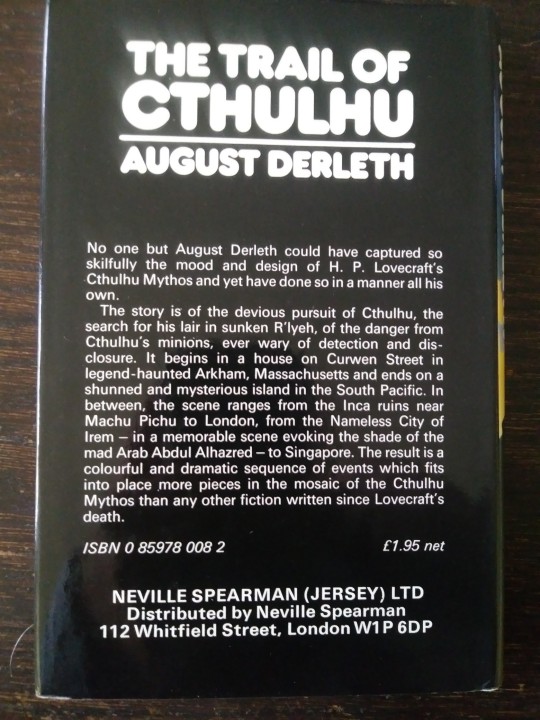
1 note
·
View note
Text
"STRANGE GLORY, Awakening Man's Latent Powers", was a 1977 publication edited by Gerry Goldberg. It was published by St. Martin's Press and contained 151 pages of illustrations and text of the 'New Age' variety. Lovecraft and his creations are cited several times in the book, but certainly he is not a primary feature. All the interior illustrations are in B+W, but some artworks by Virgil Finlay, Stephen Fabian, and others of the pulp craze era are included too. (Exhibit 473)
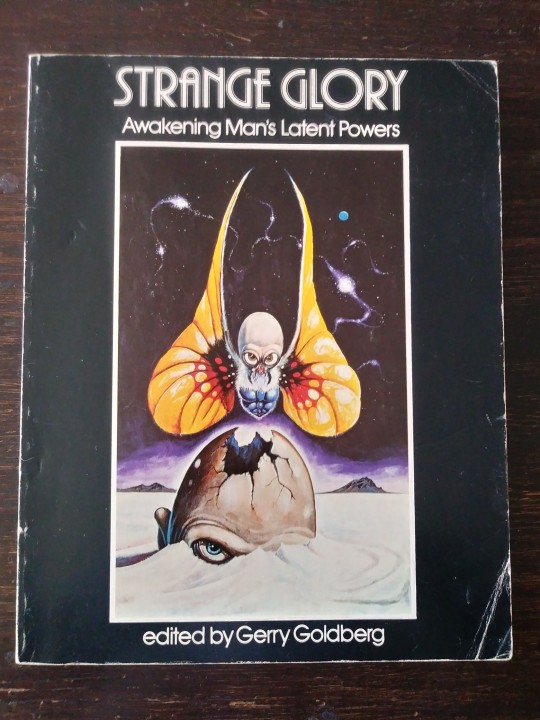
1 note
·
View note
Text
An illustrated book by artist, Dave Shephard. The full color publication was printed in 2021 by Quarto Publishing plc. The book contains 144 pages and includes both THE CALL OF CTHULHU and Lovecraft's earlier work, DAGON. Though rendered very much in typical comic book style the text and illustrations remain fairly true to Lovecraft's origional stories. (Exhibit 472)

4 notes
·
View notes
Text
For anyone who is familiar with the H. P. Lovecraft revealed in his letters to friends and family, his essays on non-fiction subjects, and his frequent admissions of zero belief in the supernatural, one might get the impression of a man utterly cold towards the whole fantastical essence of his own fiction. In his final assessment of how the universe works and the limitations of 'reality' based on all tangible 'truth' the real world is a very limited thing. Despite the Mechanist/ Materialist part of him Lovecraft made the following statement in a letter dated 1931: "Much as I would like to live in a cosmos full of my favorite Cthulhus, Yog-Sothoth's, Tsathogguas, and the like, I find myself forced into agreement with men like Russell, Santayana, Einstein, Eddington, Haechel, and so on." From SELECTED LETTERS III. by Arkham House Publishers. The aforementioned gentlemen were the 'founding fathers' of Mechanist/ Materialist philosophy and the statement reveals that H. P. Lovecraft was a person of deeply dual nature and a rationalist by force and not by choice. (Exhibit 471)


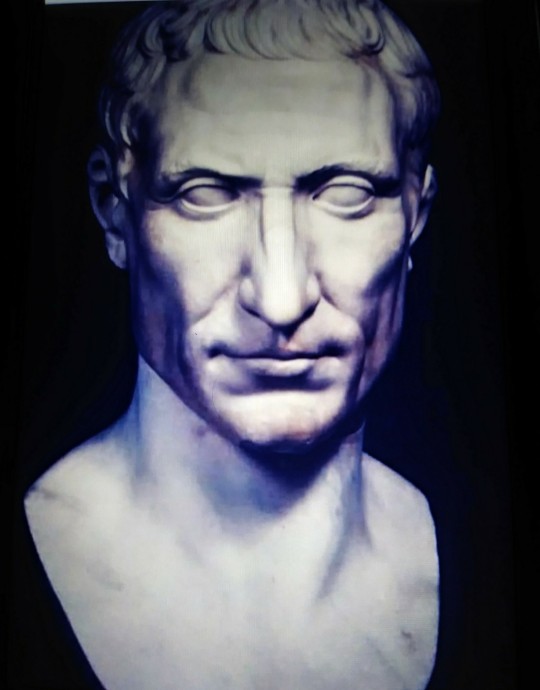
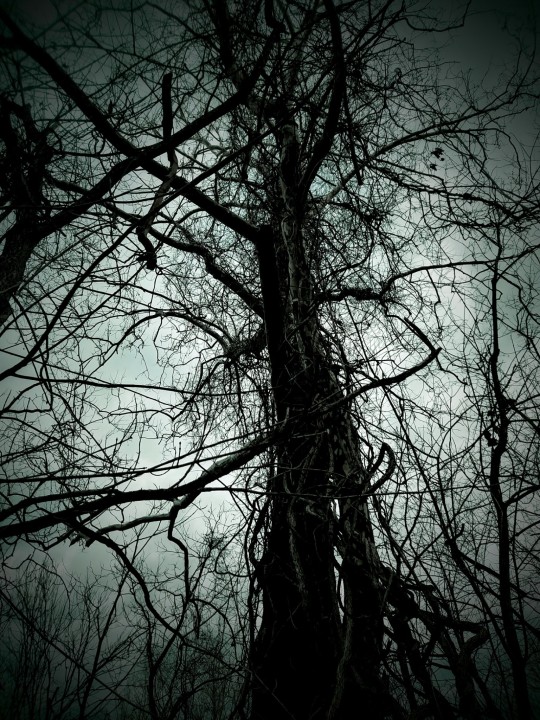

1 note
·
View note